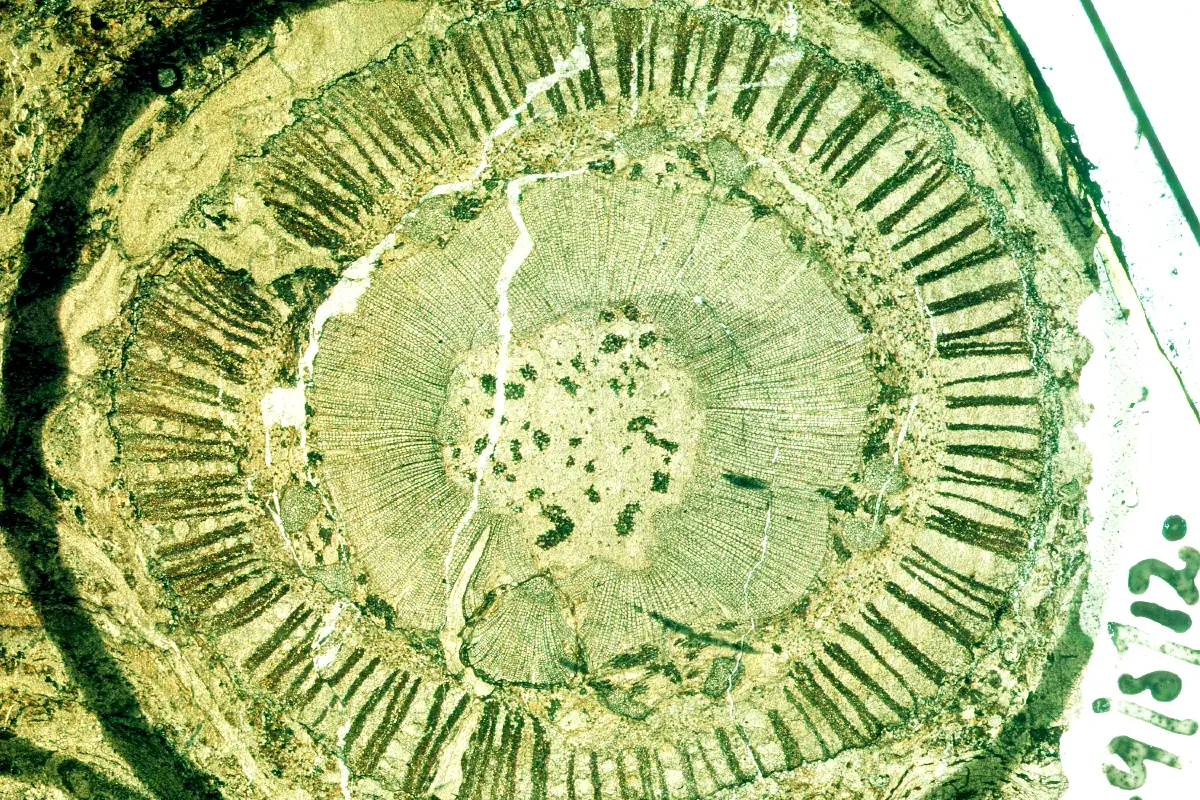Contents
CLASSIFICATION OF LYGINOPTERIS
Kingdom :- Plantae
Division :- Gymnospermae
Class :- Cycadopsida
Order :- Pterdospennales
Family :- Lyginopteridaceae
Genus :- Lyginopteris
STUDY OF EXTERNAL MORPHOLOGY OF THE STEM
- Lyginopteris is a palaeozoic pteridosperm. It is a stem genus of Calymatotheca Hoeninghausi. The descriptions of Lyginopteris Oldhamia are available.
- The genus was described under Dadoxylon oldhamium by Binney in 1886. Later the genus was transferred to Lyginodendron on the basis of cortical impressions. Genus Lyginopteris was established by Potonie in 1899.
- Petrifications and compressions of the stem were found in the lower and middle. Coal measures of Britain, continental Europe and north America.
- The stem was long and generally slender. Diameter varied from 2 mm to 40 mm, sometimes up to 4 cms . Some specimen showed branching.
- The branches were axillary when present. These were arranged spirally.
STUDY THE ANATOMY OF STEM
- The section shows three distinct regions-
- central pith
- centrally located vascular tissue
- outer region of cortex.
- A large parenchymatous pith was present in the centre. Many sclerotic nests were present scattered in this region.
- Along the margins of the pith were present many strands of primary xylem. Protoxylem was mesarch .
- Primary xylem was made of tracheids with bordered pits on their radial walls.
- The strands of primary xylem were surrounded by a wide region of secondary xylem. It was made of tracheids with multi seriate bordered pits. Wide medullary rays which alternated with groups of primary xylem were also present.
- Continuity of secondary xylem was interrupted by outgoing leaf traces giving an appearance of four large and unequal masses.
- Outside the secondary xylem were present cambium and secondary phloem. Pericycle was situated outside the vascular tissues and was represented by groups of stone cells.
- A band of internal periderm was present outside pericycle.
- The cortex situated outside was divisible into inner cortex and outer cortex.
- The inner cortex was poorly preserved and, therefore, the tissues were not distinct. However, it gave an impression as if made of large parenchymatous cells.
- Outer cortex was made of a wide region of radially arranged fibrous strands. These were anastomosed and formed a distinct reticulum.
- Numerous glands were present on the stem surface.The tip of the gland was spherical and was made of small cells. These were sessile as well as stalked.
IDENTIFICATION OF LYGINOPTERIS
- DIVISION – Gymnospermae
- Ovules naked
- Seeds attached to scales
- Scales forming a strobilus
- Class:- Cycadopsida
- Wood manoxylic
- Large frond-like leaves
- Seeds with radial symmetry
- Order– Pteridospermales
- Leaves large, frond-like, pinnately compound
- Large leaf traces with one or more strands
- Spores formed in sporangia, aggregated in synangia.
- Family – Lyginopteridaceae
- Stem monostelic
- Petioles with single vascular strand
- Seeds small.
- Genus – Lyginopteris
- Presence of stone cells in pith,
- Wide fibrous bands in outer cortex.
REFERENCES
- https://en.wikipedia.org/wiki/Lyginopteris
- https://www.shutterstock.com/search/ephedra
- Text book of practical :- botany


Leave a Reply